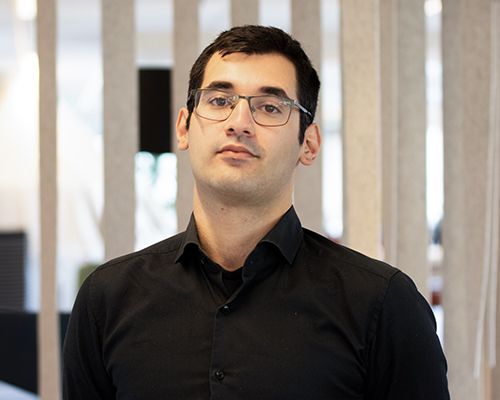In 2024, Dominik was appointed as a tenure-track Assistant Professor at the Institute for Technology-Inspired Regenerative Medicine (MERLN) at Maastricht University. His research group operates at the interface of chemistry, biology, and materials science, developing molecular strategies to engineer dynamic systems that adapt, respond, and evolve—just like nature intended.
Our work centers on harnessing the power of dynamic covalent chemistry and stimuli-responsive materials to address key challenges in regenerative medicine. We design smart materials capable of sensing their environment and reacting accordingly, and we develop chemical tools that operate with surgical precision within complex biological settings, such as living cells or tissues.
Non-covalent interactions—like those that guide DNA base pairing, protein folding, or cell membrane formation—are the invisible forces that organize life. Inspired by this molecular choreography, our research is driven by two central pillars:
- Engineering adaptive, life-like materials
-
We create innovative materials that respond to multiple internal and external stimuli—such as changes in pH, redox state, light, or enzymatic activity. To achieve this, we design dual-network systems that integrate dynamic covalent bonds with various stimulus-responsive elements. These hybrid materials exhibit adaptive, reversible behavior and hold great promise for applications in tissue regeneration, drug delivery, and responsive biomaterials.
- Directing chemical reactions with spatial and temporal precision
-
In crowded biological environments, precision is everything. We exploit dynamic covalent interactions to bring reactive partners into close proximity, enabling templated ligation reactions—transformations that would otherwise be energetically or kinetically inaccessible. This proximity-driven chemistry allows us to construct bioactive compounds directly at their site of action, ensuring high specificity and minimizing side effects.
Building on this principle, we also design cascade reactions that unfold in a controlled sequence, where the product of one transformation serves as the substrate for the next. These multi-step processes can be triggered by a single stimulus and proceed through precisely guided molecular events, offering powerful routes for signal amplification, prodrug activation, and the localized generation of complex functional molecules.
By combining the elegance of molecular design with the complexity of living systems, our group aims to develop transformative tools and materials that adapt, evolve, and function in harmony with biology.
Selected Publications
- Schauenburg, Dominik, and Tanja Weil. "Not So Bioorthogonal Chemistry." Journal of the American Chemical Society (2025).
- Schauenburg, Dominik, et al. "Macrocyclic Dual‐Locked “Turn‐On” Drug for Selective and Traceless Release in Cancer Cells." Angewandte Chemie 136.18 (2024): e202314143.
- Schauenburg, Dominik, and Tanja Weil. "Chemical Reactions in Living Systems." Advanced Science 11.8 (2024): 2303396.
- Schauenburg, Dominik, et al. "Synthesis of Polymers Containing Potassium Acyltrifluoroborates (KATs) and Post‐polymerization Ligation and Conjugation." Angewandte chemie 132.34 (2020): 14764-14771.

